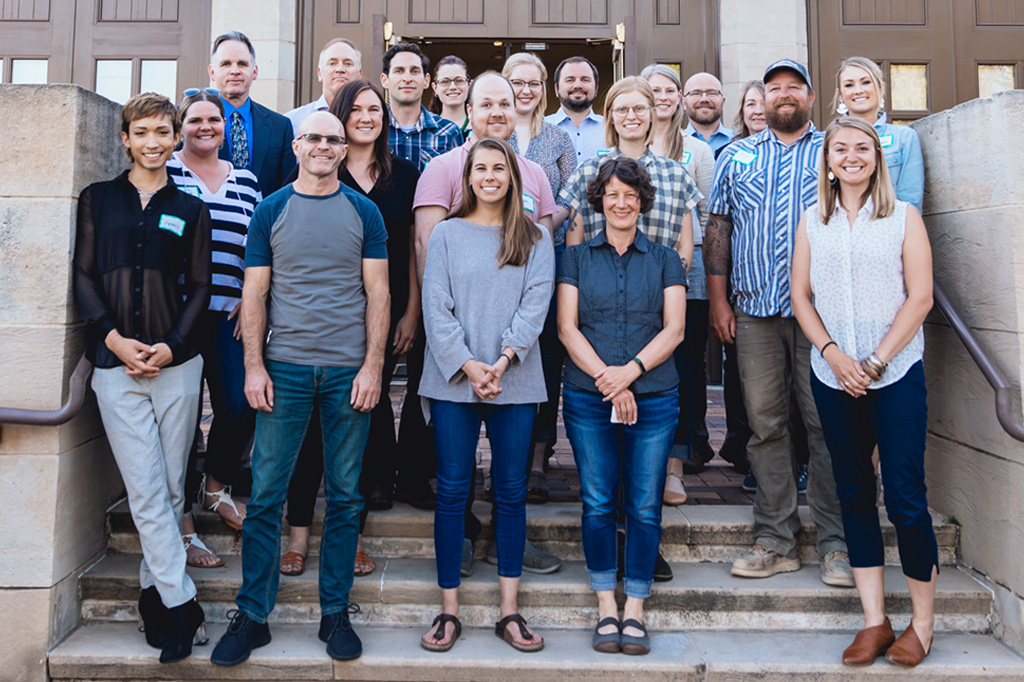It’s no secret the City of Boise aims to be the “most livable city in the country.” It’s a vision worth aiming for, but what exactly does that mean? After all, livability can mean many different things to many different people.
The City of Boise defines livability through a mission of Lasting Environments, Innovative Enterprises, and Vibrant Communities (LIV). Every few years, since 2015, the city has produced the City of Boise Livability Report, aiming to meet the following seven goals: Safe and Secure Community, Healthy Community, Responsible Built Environment, Connected Community, Environmentally Sustainable Community, Strong Diverse Local Economy, and Creative and Informed Community.
Again, it sounds great on paper, but what does it mean for the average citizen? Jami Goldman, the city’s sustainability coordinator, has an answer.
“After working on the LIV report, we realized it needed to be more than a static document. We needed to breathe life into it, and make it a living document,” Goldman explained. By creating the Livability Ambassador Program, a visionary document became a citizen-centered lived experience.
Eighteen Boise residents were selected out of the 60-plus applications received for the first year of the program. Crystal Rain, a 2018 Livability Ambassador, heard about the program at an Earth Day event at Boise State University. As Goldman was introducing the program to the crowd, Rain thought, “This is everything I want to do. Sustainability has always been my jam and jelly. I want to understand the city’s vision for a more sustainable community.”
Rain, and the rest of the inaugural year ambassadors, explored the city’s work on Environmentally Sustainable Community. The first-year ambassadors traveled to many sites across the Valley, including Twenty Mile South Farm, which includes the city’s first net-zero commercial building. “Not many people know we have a 4,225-acre farm in Kuna where we use 100 percent of our biosolids to fertilize crops we sell back to the community—all to keep our sewer rates low,” Goldman said. “That’s a unique, Boise-specific thing. Very few communities have the ability to create an urban farm of this magnitude.”
Outside of the six field trips, the group had presentations and discussions with city experts about Boise’s sustainability practices. Wayne Rysavy, the city’s communication manager for Planning and Development Services, acknowledged the format is very purposeful: “We often think of the city as an abstract entity. The Livability Program gives the community a face and a name to the experts working behind the scenes. Citizen involvement helps ensure we are moving in the right direction and aligning with our community’s values.”
The first year of the program was a clear success. Creating something of this scale from scratch was no small feat, and yet it came together like a seasoned program. “Nothing about my experience felt incomplete or like a pilot program,” said Rain. These types of opportunities are what brought her to Idaho from Alaska. Boise’s commitment to livability resonated deeply with Rain. “The City of Boise walks the walk,” she said. “They don’t take the easy route. Livability is about economics, the environment, and the social wellbeing of a community. None of this is easy messaging; it takes in to account the full external costs of running a healthy city.”
The 2019 Livability Ambassadors are focused on creating a Responsible Built Environment. Sharon Konkol, a current Livability Ambassador and 40-year resident of Boise, is an advocate of active transportation and wanted to learn more about how the built environment impacts other community functions. Konkol explained that livability, to her, is simple: “It’s clean air to breathe, clean water, and locally grown food. An economic base that supports adequate housing in the city limits to lessen commuter traffic. The built environment has immense impact on other forms of transportation like walking and biking.”
Between scooter wars, proposed bikeways, and endless road construction, transportation and its relationship to the built environment is a timely topic for the new ambassadors to tackle. Rysavy acknowledges that transportation infrastructure (bikeways and multi-use paths, for example) is part of a much larger puzzle that includes behavioral change from the larger community. “How do we get people to move toward a multi-model way of thinking and away from single-occupancy vehicles? We have to propose solutions that align with what our community sees as realistic changes. The Livability Ambassadors help us see those pressure points and better understand our community. We don’t want a top-down approach to any of this.”
As the second year of the program is in full swing, Rain reflected on how her experience as an ambassador has impacted her life. The new friendships with other ambassadors, professional connections, and a deeper sense of place all contributed to her glowing review of the program. But what made her want to put down deeper roots was this: “I can’t say enough good things about the program and what I learned. Being a Livability Ambassador made me realize that Boise can still feel like a small town. We still have time to sit down and talk.”

